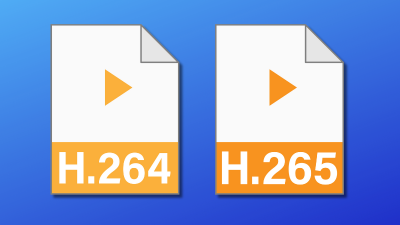Welcome to our latest article, where we are presenting you – the top video codecs of 2023. Explore their types, uses, and exciting newcomers like H.266 and MPEG-5. Uncover the perfect codec for your needs right here!
What is a Video Codec?
A video codec is a technology that encodes and compresses digital video files for efficient storage, transmission, and playback. It reduces the size of video data by encoding it using specific algorithms, making it easier to transmit over networks or store on devices with limited storage capacity.
When playing the video, the codec decodes the compressed data back into a viewable format, allowing us to watch videos on various devices. Different codecs have varying levels of compression efficiency, quality, and compatibility, making them essential for the modern video streaming and multimedia industry.
Types of Video Codecs
Video codecs come in different types, each serving specific purposes in video production and post-production:
- Compression Codecs: These codecs are widely used for everyday video consumption and are designed to reduce file sizes while maintaining acceptable video quality. They are commonly used for streaming and storage, and their compression follows specific standards for compatibility with different devices and software.
- Raw Codecs: Raw codecs are used during video capturing and recording, preserving the data from the camera’s image sensor without compression. This allows for full editing control during post-production.
- Mezzanine Codecs: Mezzanine codecs are intended for post-production workflows. They retain the quality of the source recording while optimizing it for storage and playback. Mezzanine codecs result in smaller file sizes compared to raw codecs and are less resource-intensive during playback.
Applications of Video Codecs
Some of the key applications of video codecs include:
Video Streaming: Codecs like H.264, VP9, and AV1 are used to encode and decode video content for streaming services like Netflix, YouTube, and Hulu. They are optimized for low latency and high compression, allowing video content to be streamed efficiently over the internet with minimal buffering.
Video Conferencing: Codecs like H.264 and VP8 are used in video conferencing applications like Skype, Zoom, and Google Meet. These codecs allow real-time video communication over the internet, with low latency and high image quality.
Webcasting: Codecs like H.264 and VP8 are used in webcasting applications to broadcast live events over the internet. They are designed to handle large amounts of data, ensuring the video stream is transmitted smoothly and with minimal buffering.
Video Editing and Post-Production: Codecs like ProRes, DNxHD, and CineForm are used in video editing and post-production applications like Final Cut Pro, Adobe Premiere, and DaVinci Resolve. Optimization for high image quality and efficient data storage makes them ideal for video editing and post-production workflows.
Popular Video Codecs in 2023
In 2023, several video codecs have gained prominence, each offering unique advantages and use cases.
Let’s explore some of the most popular ones:
- H.264 (AVC): Despite being one of the older codecs, H.264 remains widely used in online videos, thanks to its near-universal device support. It strikes a balance between compression efficiency and playback quality, making it a safe choice for many projects.
- H.265 (HEVC): H.265 offers better compression than H.264, resulting in lower bandwidth requirements for video streaming. However, its adoption has been slower due to the lack of widespread device support, especially on older systems.
- AV1: Developed by the Alliance for Open Media, AV1 promises significant bandwidth reduction compared to H.265 and H.264. Although it has seen limited adoption, its royalty-free licensing model makes it an attractive option for streaming services and developers.
- VP9: VP9 is an open-source and royalty-free codec developed by Google. It is designed to efficiently compress and decode video data while maintaining high video quality. It’s widely used for streaming high-definition video content on platforms like YouTube and other video streaming services.
What about H.266 and MPEG-5 (EVC)
H.266, also known as VVC, is touted as the successor to H.265, offering even better compression efficiency. Its paid licensing may limit adoption, though its relevance may grow with 8K implementation.
MPEG-5 (EVC) is another next-gen codec promising up to 25% bandwidth reduction compared to H.265 with innovative techniques. While it has gained some success, industry experts believe it may be the least successful among the primary next-gen codecs.
Choosing the Right Video Codec
Selecting the appropriate video codec depends on your specific needs and goals. Consider the following factors when making your choice:
- Playback Quality: Mezzanine codecs like Apple ProRes or Avid DNxHD offer high-quality playback, while compression codecs like H.264 or H.265 provide a balance between quality and file size.
- File Size: If you require smaller file sizes without significant loss in quality, compression codecs like H.264, H.265, or AV1 might be suitable.
- Ease of Editing: Mezzanine codecs are ideal for post-production workflows, offering efficient editing capabilities.
- Codec Support: Ensure the codec you choose is compatible with the devices and software you intend to use.
Note: H.265 is not supported by many older systems, making H.264 your safest bet.
Social Media Videos
When uploading content to social media platforms and content delivery services, remember that these sites frequently transcode or encode your media to guarantee the best delivery to their consumers. They may do this by effectively storing and streaming your information using video standards like VP9.
For storing your media before uploading it, consider well-known codecs like H.264 or antiquated codecs like Theora. These codecs offer broad compatibility and have established themselves as trustworthy solutions for distributing high-quality videos across different platforms.
Machine Learning and AI in Video Compression
The convergence of machine learning and artificial intelligence with video compression represents a fascinating frontier. These cutting-edge technologies empower video codecs to dynamically adapt to varying video content, optimizing compression methods for superior quality and smaller file sizes.
Through pattern recognition and advanced algorithms, the combination of machine learning and AI has the potential to revolutionize the world of video compression, offering new possibilities and efficiency!
Change The Video Codec Of Your File
Thankfully, changing the codec is quite straightforward. Simply select “Choose video codec” under “Optional Video Settings” when converting your file to formats like MP4, MOV, or 3GP on online-convert.com.
For various output formats, you will find codecs like:
- dx50
- h.263
- h.264
- h.265
- huffyuv
- mjpeg
- mpeg1video
- mpeg2video
- mpeg4
- msmpeg
- screen_video
- screen_video_2
- sorenson
- theora
- vp8
- vp9
- wmv7
- wmv8
- xvid
Remember, video files hold multiple media streams, including audio and sometimes subtitles. If your video plays but the audio is missing, it might be an issue with the audio codec. And yes, you can also change the audio codec in your video file.
Conclusion
Nowadays, video codecs offer content creators and consumers a wide range of possibilities. While newer codecs like H.265 and AV1 boast improved compression, H.264 still remains widely used in web videos due to its extensive device compatibility.
When choosing the right video codec, consider your specific requirements carefully. The good news is: there is a codec available to meet your needs – whether you prioritize playback quality, file size, or ease of editing.


